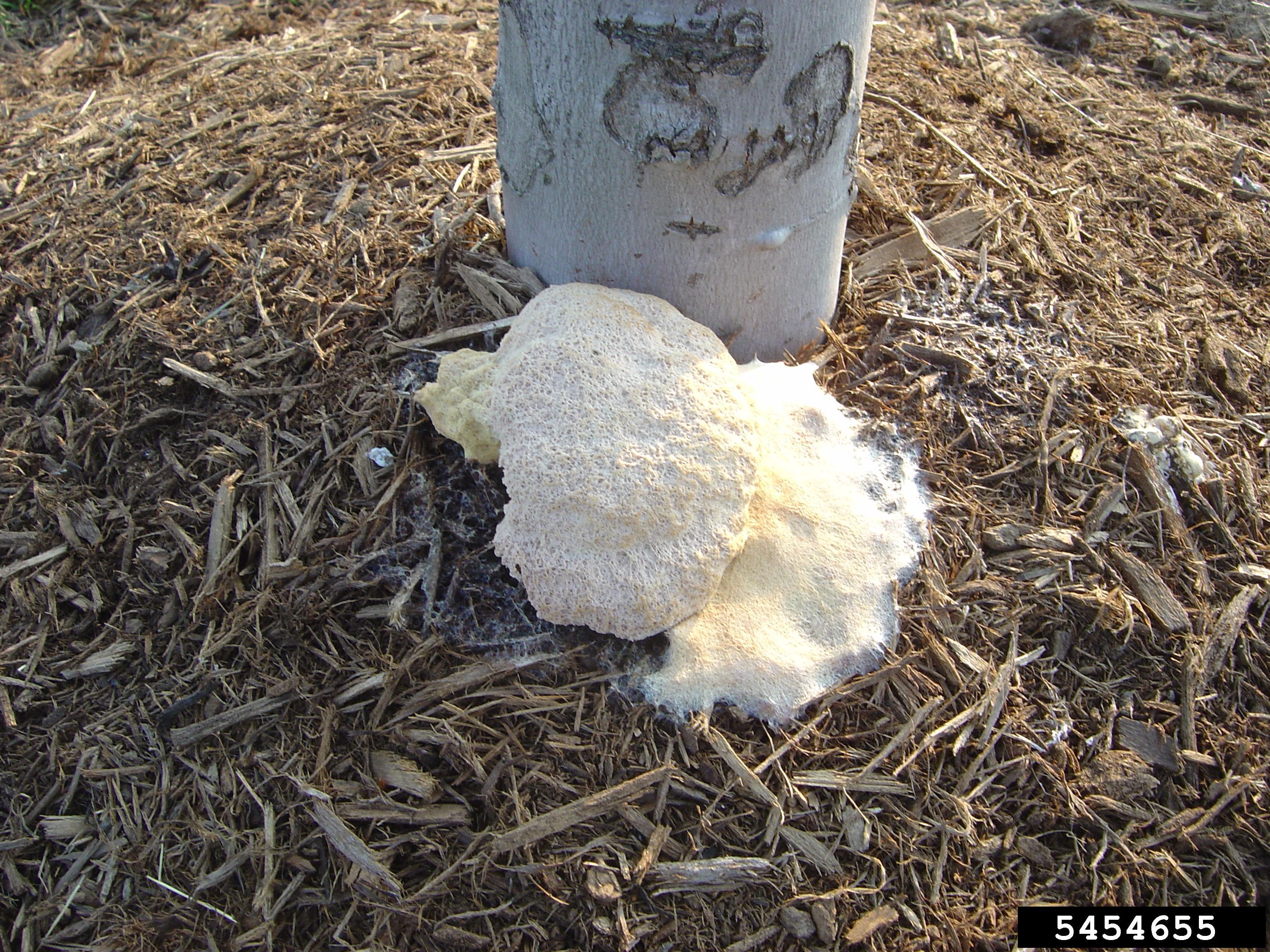 Watch for Slime Mold - July 29, 2020 Jeff Schalau, Agent, Agriculture & Natural Resources University of Arizona Cooperative Extension, Yavapai County With the onset of the Arizona monsoon season, we will see the summer wildflowers start to bloom, warm season grasses greening up, and all the other cultivated and non-cultivated plants will appreciate the warm season moisture. On the weekend of July 11 and 12, my property in Prescott received 2¼ inches of rain and hail. That moisture also brought the emergence of hundreds of mushrooms and a colony of slime mold in my vegetable garden where organic matter is abundant. “Slime mold” is actually a generic term that describes several organisms with similar growth characteristics. These single-celled organisms live freely but aggregate to form colonies. They were once classified as fungi. Now, they are classified in the Kingdom “Protista” which are single-celled organisms with an organized and membrane-bound nucleus and internal structures called “organelles”. If you don’t remember Biology 101, then maybe you remember the movie, The Blob, starring a very young Steve McQueen. The storyline unfolds when a fast-growing, amorphous entity crashes to Earth from outer space inside a meteorite. It devours and dissolves citizens in a couple of mythical towns in rural Pennsylvania. As it wreaks havoc, it grows larger, redder, and more aggressive eventually becoming larger than a building. You’ll have to watch it to see how this classic horror story ends. All that to say: the premise for this movie must have been slime mold. If you’ve never seen slime mold, it is a little unusual. A common type seen in northern Arizona is aptly named Dog Vomit slime mold. It is usually starts out cream-colored, but may be yellow to reddish orange and have a moist sheen on its surface. The texture is gelatinous. It goes from light color to dark color in response to decreasing organic matter and moisture availability. Slime molds are considered saprophytic, meaning they derive most of their nourishment from decaying organic materials. Most slime molds in natural settings prefer moist, shady places like crevices in rotting logs, leaf litter, or bark mulch. The mass of slime mold is called a “plasmodium” and forms from many individual swimming cells called swarm cells. The plasmodium can move at a very slow rate, feeding on bacteria, other microorganisms, and organic matter. Changes in moisture or temperature, or exhaustion of its food supply can cause the slime mold to move to a drier, more exposed location to produce spores. Slime molds will not attack healthy, living plants even if they are found on them. They may cover portions of plants, including leaves, and block the sun out for seedlings or turf but even this impact is temporary. If they are on grass plants, they can be sprayed with water and/or raked to disrupt them. Eventually, they retreat or move into a reproductive phase. Slime molds are harmless to pets and humans with the exception that people with respiratory conditions could be irritated by the spores. As a graduate student at Humboldt State University, I had a few different jobs. One was preparing lab materials for Biology 101 classes. This included rearing a colony of slime mold. I grew it in a large glass dish on moist filter paper. I would feed it oat flakes and every once in a while it would try to leave the glass dish, but it wouldn’t get far before I gathered it back up and contained it again. At the end of the slime mold lab, I would slowly starve it to make it “sclerify” (the formation of a dormant structure called a sclerotium). Sometimes, I would not be patient enough and the colony would produce spores. The spores were undesirable because they would need to go through a sexual reproduction stage before forming a new slime mold colony. The sclerotium were more desirable because they would resume colony growth when water and food became available like a vegetative cutting from a plant. Slime mold kits can be ordered from biological supply companies if you are interested. If you got this far, you are definitely curious and potentially a science geek. Watch for slime molds this monsoon season – if you dare! I’ve also included a video link with the online edition (see URL below) that shows and describes how slime mold moves in addition to images and links to publications. You can follow the Backyard Gardener on Twitter – use the link on the BYG website. If you have other gardening questions, email the Master Gardener Help Desk in Prescott (prescottmg@gmail.com) or Camp Verde (verdevalleymg@gmail.com) and be sure to include your name, location, and phone number. Find past Backyard Gardener columns or provide feedback at the Backyard Gardener web site: https://cals.arizona.edu/yavapai/anr/hort/byg/. Images  Slime mold growing in Prescott, AZ vegetable garden (Photo by Jeff Schalau, University of Arizona).
Slime mold growing in Prescott, AZ vegetable garden (Photo by Jeff Schalau, University of Arizona). Dog vomit slime mold growing on organic mulch (Jason Sharman, Vitalitree, Bugwood.org).
Dog vomit slime mold growing on organic mulch (Jason Sharman, Vitalitree, Bugwood.org).Additional Resources Slime Molds, University of Wisconsin Extension hort.extension.wisc.edu/articles/slime-molds/ Slime Mold - Lawns, University of Maryland Extension extension.umd.edu/hgic/slime-mold-lawns Slime Mold, Texas A & M Agrilife Extension plantclinic.tamu.edu/factsheets/slime-mold/ Pulsating Slime Mold Comes in Peace, From: Deep Look, KQED, San Fransisco. |